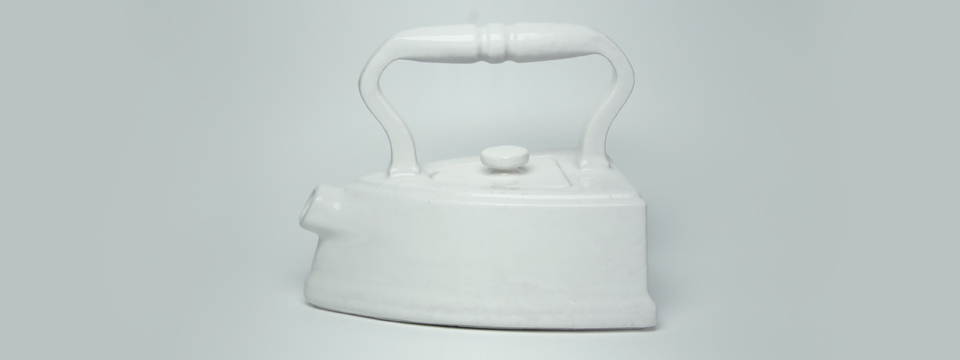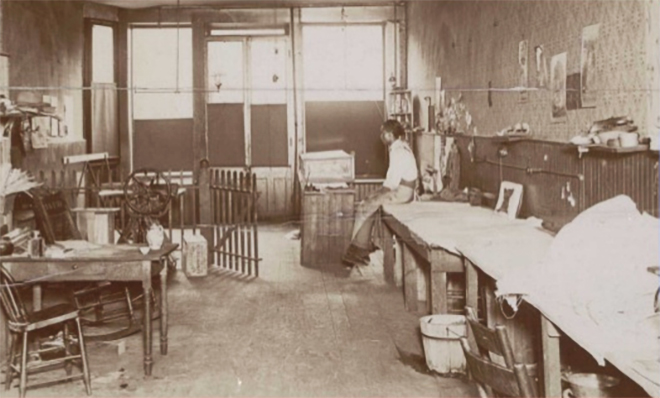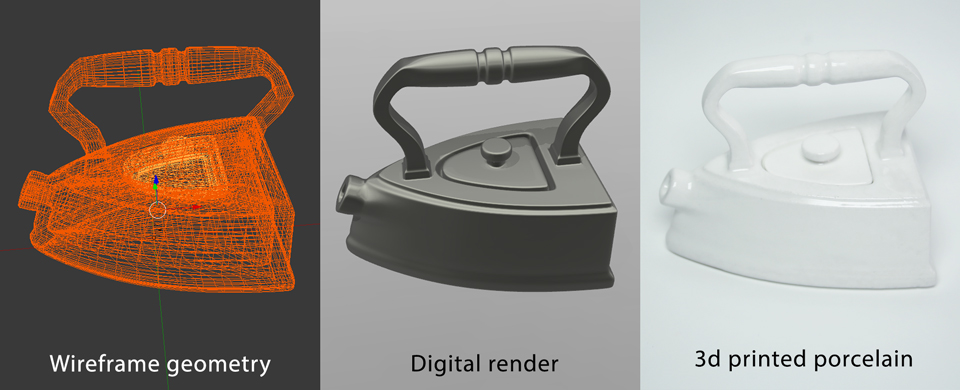Teapot
This tea pot is based on a traditional iron used in Chinese American laundries in the beginning of the 20th century. By the 1920s, about 30 percent of all Chinese workers in the United States worked in laundries.

Background
The most popular business for Chinese immigrants since the gold rush in the mid 1800s was the laundry which, in many areas, was almost exclusively a Chinese enterprise. This was largely due to a laundry’s low start-up cost as it minimally required a scrub board, soap, and an iron with no special training. Racial discrimination also played its part as Chinese Americans were kept from more desirable careers and pushed towards undesirable service-oriented professions such as cooking and cleaning which were considered undesirable occupations by Euro-Americans.
Especially during the Chinese exclusion era (see Soup Spoon), Chinese American laundries were characterized by long hours, arduous labor, razor-thin profit margins, and social isolation. A typical laundryman worked in hot and humid conditions for ten to sixteen hours a day, sometimes up to twenty hours continuously without even stopping to eat. To further reduce operation costs, owners usually lived in their shop and therefore rarely left the premises. Much of these working conditions were to account for the fact that they charged 15 percent less in order to compete with their white counterparts.

Chinese Laundries: Tickets to Survival on Gold Mountain by John Jung
Since the exclusion laws made it difficult for Chinese laborers to bring their wives and families to America, many laundry workers lived and worked in extreme isolation, only exacerbated by language barriers and systematic segregation of Chinese populations. This, along with laundrymen’s intense work ethic, were motivated by the knowledge that they may be giving their families back in China a better life. Since they had no time to do anything else, they would send back whatever they could save of their profits. The money that was sent home was often huge by Chinese standards, transforming entire regions in China with paved roads, electricity, and new schools.
Design
The design of the teapot is based on a traditional iron that was used to press shirts, sometimes called the “eight pound livelihood” referring to the iron’s weight.

Photograph by Museum of Chinese in American
When in use, this type of iron is burned red hot on a gas stove, dipped in a pail of water with an iron stick, caught in a pad in hand, and swiftly pressed along the shirt.
The handle on the lid of the teapot is the size of a dime, which was inspired by this quote by a laundryman as told to historian Paul Siu, author of The Chinese Laundryman: A Study of Social Isolation:
They did not know even how to write down numbers. When a bundle of laundry was done, he had to put down the amount charged for the work. Being so illiterate, he could not write the numbers. He had a way though, and what a way! See, he would draw a circle as big as a half dollar coin to represent a half dollar, and a circle as big as a dime for a dime, and so on. When the customers came in to call for their laundry, they would catch on to the meaning of the circles and pay accordingly. It is indeed laughable.

The model
The model was generated algorithmically using free and open source software: Python and Blender. Python was used to generate the geometry and Blender was used for post-processing, viewing, and exporting into a printable 3d model.

You can view the source code and instructions for how this model was created. You can also view the model in your browser
View additional pieces: